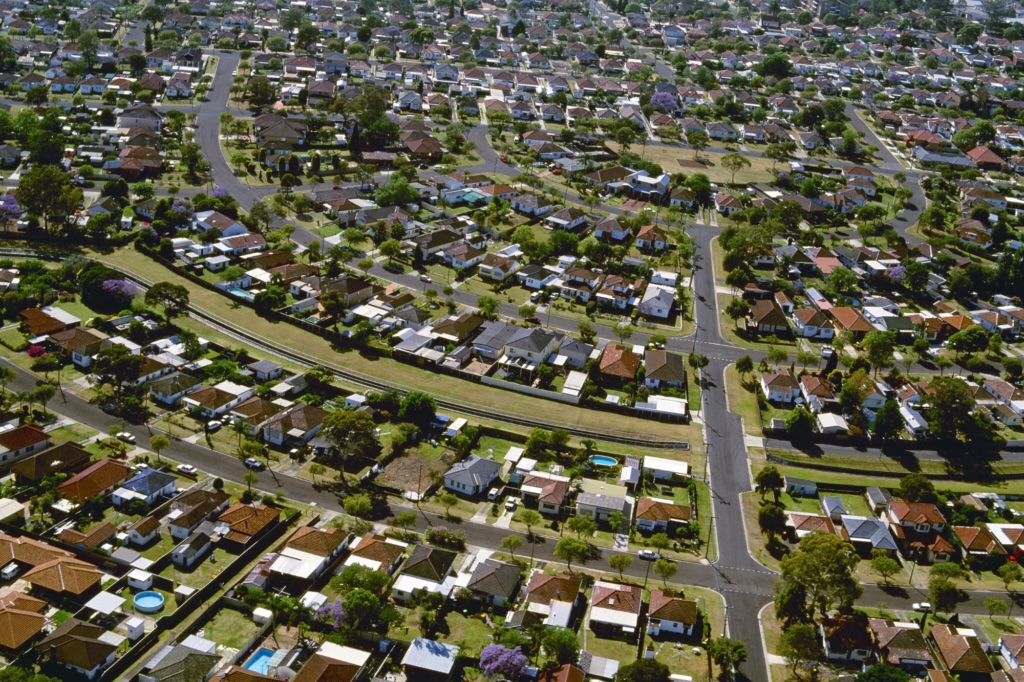Key Takeaways
- Unit prices are rising faster than house prices in about 60% of Australian suburbs.
- The national average price gap between houses and units has reached a record 48.2%.
- Major factors driving this trend include:
- Affordability challenges
- Reduced borrowing capacity
- Increased investor and first home buyer activity in the unit market
- Buyers prioritising location over property size
- Regional variations exist:
- Sydney and Melbourne see significant unit value growth in many suburbs
- Brisbane and Adelaide show a narrowing gap between house and unit prices
- Darwin bucks the trend with house values still outpacing units
- The lower-priced segment of the market is experiencing stronger growth overall.
- This shift has implications for property valuations:
- Unit owners may see faster appreciation
- House values in some areas may stagnate
- Location is becoming increasingly critical in determining property value
- This trend will likely continue as long as housing affordability remains stretched.
- The changing market dynamics require a reassessment of traditional assumptions about property value growth.
- Potential buyers – both homeowners and investors – should be following this trend.
In a significant shift in the typical Australian property growth results, unit prices are rising faster than house prices in approximately 60% of suburbs nationwide. This trend, highlighted in recent CoreLogic data, reflects changing market dynamics and buyer preferences.
The Growing Price Gap Between Houses and Units
The price difference between houses and units has reached a record high, with the national average gap now standing at 48.2%. This substantial difference is even more pronounced in some capital cities:
- Sydney: 72.7% gap (equivalent to $620,272)
- Canberra: $401,822 difference
- Melbourne: $333,837 difference
These figures underscore the growing affordability challenge in the housing market, particularly for those looking to purchase property but have been priced out of their preferred property type and area.
Source: CoreLogic
Factors Driving the Acceleration of Unit Prices
Affordability Constraints
As house prices continue to climb, many buyers are finding themselves priced out of the detached housing market. This has led to increased demand for units, which typically offer a more affordable entry point into desirable locations.
Reduced Borrowing Capacity
Sharp declines in borrowing capacity have pushed many potential buyers towards the unit market. With stricter lending criteria and higher interest rates, the ability to secure large mortgages for houses has diminished, making units a more viable option for many.
Investor and First Home Buyer Activity
The unit market has seen increased activity from investors and first home buyers. These groups are often more price-sensitive and are attracted to the lower entry prices and potentially higher rental yields of units.
Location Over Size
Many buyers are opting to compromise on size to secure properties in preferred locations. This trend is particularly evident in more affluent suburbs where unit values are rising while house prices are staying flat or even reducing in some areas.
Regional Variations in Property Value Growth
The shift towards units is not uniform across all Australian cities. Here’s a breakdown of how different regions are experiencing this trend:
Sydney and Melbourne
In these major cities, unit values are outpacing house values in many suburbs. For example:
- Parramatta suburbs like Telopea, Dundas, and Newington saw unit values increase more than four times faster than houses.
- In Melbourne, suburbs such as St Kilda West, Elsternwick, and Murrumbeena experienced unit value growth up to 2.7% while house values declined by as much as 5.7%.
Brisbane and Adelaide
These cities are seeing a narrowing of the price gap between houses and units:
- Brisbane units jumped by 5.8% compared to 3.4% for houses over a three-month period.
- Adelaide units outperformed houses by a similar margin, increasing by 7.1%.
Perth and Darwin
While Perth is following the national trend, Darwin is bucking it, with house values still outpacing unit values.
The Lower End of the Market Leads Growth
The shift towards units is part of a broader trend of stronger growth in the lower-priced segments of the market. Across capital cities, the lower 25% of the housing market saw a 3.3% increase in values, compared to just 0.8% in the upper end.
This trend is particularly evident in more affordable house markets:
- In Sydney, suburbs like Wiley Park, Birrong, Punchboll, and Yagoona saw house value increases between 5.8% and 7.2%.
- Melbourne’s inner suburbs like Balaclava, Middle Park, and South Melbourne defied the general downturn, with house prices increasing by up to 3%.
Implications for Property Valuation
This shift in the market has significant implications for those looking to value their property or estimate real estate values:
- Unit owners may see faster appreciation: Those who own units, particularly in high-demand areas, may see their property values increase more rapidly than in recent years.
- House values in some areas may stagnate: Especially in expensive suburbs, house values may see slower growth or even declines as buyer preferences shift.
- Location becomes even more critical: The value of a property, whether a house or unit, is increasingly tied to its location rather than just its size or type.
- Affordable areas may see stronger growth: As buyers seek value, more affordable suburbs and regions may experience stronger property value growth.
Looking Ahead
Experts suggest that the trend of unit values outpacing house values is likely to continue in the foreseeable future. Eliza Owen, CoreLogic’s head of research, notes that as long as housing affordability remains stretched and borrowing capacity limited, the unit sector is likely to continue outperforming.
For those looking to value their property or make real estate decisions, it’s crucial to consider these market dynamics. The traditional assumption that houses will always outperform units in value growth no longer holds true in many areas.
Our Summary: A Changing Landscape for Property Values
The Australian property market is undergoing a significant shift, with unit values rising faster than house values in many areas. This trend reflects broader economic factors, changing buyer preferences, and evolving urban lifestyles.
For homeowners, investors, and potential buyers, understanding these dynamics is crucial for making informed decisions about property values and investments. Whether you’re looking to value your property, estimate real estate values, or make a purchase, it’s essential to consider these changing market conditions and their potential impact on future property values.
As the market continues to evolve, staying informed and seeking professional advice can help navigate this changing landscape and make sound property decisions.



